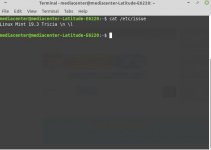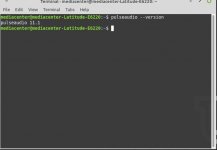IMO low latency kernels are - well, you could have guessed it already - low latency applications. I.e. if you run a studio setup and want to do software monitoring, where the sound enters a soundcard input, gets mixed with other stuff in software and is played back to the musician immediately. For this application you want the latency to be as low as possible, so the musician does not get to much of a delay between playing his notes and hearing them back from the monitor mix.
For crossover application this is pretty much useless as there will be plenty of buffering. Actually the low latency patches do take up quite some bit of processing power, so for simple music playback you will probably be better off with a normal kernel. Not to speak of system stability, "normal" kernels are always better tested simply because a lot more people will be using them.
TLDR: don't use rt kernels for a crossover.
For crossover application this is pretty much useless as there will be plenty of buffering. Actually the low latency patches do take up quite some bit of processing power, so for simple music playback you will probably be better off with a normal kernel. Not to speak of system stability, "normal" kernels are always better tested simply because a lot more people will be using them.
TLDR: don't use rt kernels for a crossover.
@duncan2: there's no way to say it more politely: if you don't have anything to contribute to a thread that's about a pulseaudio application, constantly mentioning that you don't use pulseaudio - please shut up.
Makes sense [emoji846] thanks for explanationIMO low latency kernels are - well, you could have guessed it already - low latency applications. I.e. if you run a studio setup and want to do software monitoring, where the sound enters a soundcard input, gets mixed with other stuff in software and is played back to the musician immediately. For this application you want the latency to be as low as possible, so the musician does not get to much of a delay between playing his notes and hearing them back from the monitor mix.
For crossover application this is pretty much useless as there will be plenty of buffering. Actually the low latency patches do take up quite some bit of processing power, so for simple music playback you will probably be better off with a normal kernel. Not to speak of system stability, "normal" kernels are always better tested simply because a lot more people will be using them.
TLDR: don't use rt kernels for a crossover.
One more thing - in your manual you recommend to set up Pulseaudio for resampling to 192. I can't really understand why. Could you please explain?IMO low latency kernels are - well, you could have guessed it already - low latency applications. I.e. if you run a studio setup and want to do software monitoring, where the sound enters a soundcard input, gets mixed with other stuff in software and is played back to the musician immediately. For this application you want the latency to be as low as possible, so the musician does not get to much of a delay between playing his notes and hearing them back from the monitor mix.
For crossover application this is pretty much useless as there will be plenty of buffering. Actually the low latency patches do take up quite some bit of processing power, so for simple music playback you will probably be better off with a normal kernel. Not to speak of system stability, "normal" kernels are always better tested simply because a lot more people will be using them.
TLDR: don't use rt kernels for a crossover.
The value 192k is rather arbitrary. If you choose to use the sub sample delay I would go up to at least 88.2k or 96k. If you can afford the processing power I would go up to 192k (or176.4k). Whichever sample rate family you choose is quite irrelevant I think. Resampling quality will not be higher if it happens at am integer multiplier. You could even go higher if you want to. But 192k will probably be a point of diminishing returns. All IMHO, like always. 🙂
Last edited:
Thank you for replying. Let me ask question other way round - why to resample at all? Why can't go with native 44,1 from audio file?The value 192k is rather arbitrary. If you choose to use the sub sample delay I would go up to at least 88.2k or 96k. If you can afford the processing power I would go up to 192k (or176.4k). Whichever sample rate family you choose is quite irrelevant I think. Resampling quality will not be higher if it happens at am integer multiplier. You could even go higher if you want to. But 192k will probably be a point of diminishing returns. All IMHO, like always. 🙂
And second question - if resampling I can't set up higher sample rate in Pulseaudio than my sound device is capable to receive, can't I? Eg. PCM2706 is capable to go max 48kHz so makes no sense to set resampling to 192, do I understand right?
Quality will be the same yes, but most resamplers can do integer ratios quite a bit faster.Resampling quality will not be higher if it happens at am integer multiplier.
Thank you for replying. Let me ask question other way round - why to resample at all? Why can't go with native 44,1 from audio file?
And second question - if resampling I can't set up higher sample rate in Pulseaudio than my sound device is capable to receive, can't I? Eg. PCM2706 is capable to go max 48kHz so makes no sense to set resampling to 192, do I understand right?
Resampling to at least 96k makes a lot of sense if you want to use the sub-sample delay, please look at the filters description in the manual for further info.
And you can run pulseaudio at any sample rate you like, it will downsample accordingly if the output can only handle up to a certain sample rate.
And a small note: The website and repository will be down the next couple of hours as I am migrating all the stuff to a shiny new server 🙂
FYI - I did tested to output filters to the various sound cards at the same time. Eg chain input->low pass and second path input->high pass low pass to one USB sound device and high pass to another one. I tried with various devices (USB/USB, other brand USB/USB and mix USB/laptop onboard). In whatever configuration doing so FREEZE entirely the software.Resampling to at least 96k makes a lot of sense if you want to use the sub-sample delay, please look at the filters description in the manual for further info.
And you can run pulseaudio at any sample rate you like, it will downsample accordingly if the output can only handle up to a certain sample rate.
I will check tomorrow. Will post some photo documentation as well to better picture the issueWhich pulseaudio version are you on?
Btw: The website and repo are up again.
Did you try with just a single stereo output? Did you try with two stereo outputs on the same soundcard?
Single stereo output works perfectly fine. The problem occurs only if I try to use more than one USB sound device. The problem is not related to the same name of the devices as I tried both 2x PCM2706 (computer "see" two identically named outputs) and mix device named PCM2706 and named DigiHug so computer "seen" USB devices with different naming. Both cases total feezeDid you try with just a single stereo output? Did you try with two stereo outputs on the same soundcard?
and one more thing: an output of "pactl list sinks" with two of the pcm2706 soundcards attached would be helpful, too
Shame on me but don't know how to make "pactl list sinks". Can it be executed by some command from terminal?and one more thing: an output of "pactl list sinks" with two of the pcm2706 soundcards attached would be helpful, too
How to check if Pulseaudio keeps on working after freeze of crossover? Any terminal command for that?Does pulseaudio keep on working? Can you please provide the paxor files?
- Home
- Source & Line
- PC Based
- Pulseaudio Crossover Rack - multi-way crossover design & implementation with linux

